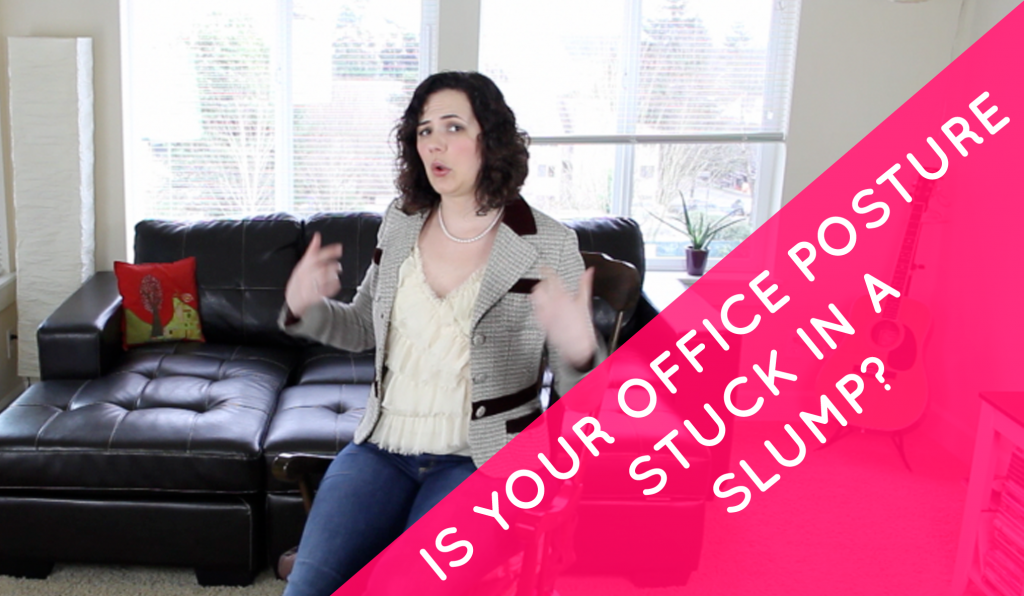
Let’s face it, office posture matters. From slumped shoulders and aching backs to diminished confidence and creativity, poor posture can have a profoundly negative effect on your physical health, happiness and productivity.
But aside from trading in your desk job for life as a yoga instructor where you can stretch eight hours every day, what can you do?
Fortunately, posture is a result of how we do what we do, not so much what we do and with a few small tweaks to your daily habits, you too can be standing taller and reaping the rewards of better office posture in less time than it takes you to check your email each day.
Why Office Posture Matters
The research is clear: good posture matters. According to the Institute for Medicine, workplace muskuloskeletal injuries result in more than $45 billion lost every year. And, if performance is your primary concern, Amy Cuddy’s now famous TED Talk demonstrates that your posture is how you’re perceived, both by your own brain and by people around you.
So, if you want an instant jolt of confidence, mental clarity and energy, all you have to do is shift your posture.
Here are three tiny tweaks that have a big impact
#1 Change how you’re sitting.
You want the seat of your office chair to be two to four inches higher than your knees so that your hips are sitting above the level of your knee. You can have it higher if you want, but sitting with your hips lower than your knees puts pressure on your lumbar spine (lower back) and forces your shoulders into a slumped position.
It’s no good trying to sit up straight if you’re starting from this position. You’re just battling physics.
Notice my chair in the video…it’s super un-fancy. I didn’t spend a lot of money on it, and you don’t have to, either. But, let me go into why I like this particular chair.
First, it has a hard seat. Soft seats tend to rock your tailbone under and curve your spine into an unfortunate c-shape that promotes the hunched over computer programmer posture that is so unhealthy. Second, it rocks. A chair that rocks allows me to pour my weight into my feet, taking strain off of my back and core. It’s a simple measure of efficiency.
For great back relief at work, sit with one foot in front of the other, both flat on the floor. This is called the rocker stance and it will save your neck…literally.
And, yes, this chair is WAY too low for my over six foot frame. I’ve padded with blankets to raise up the seat. This is the constant battle of tall people. If you are shorter, count yourself lucky because it will be much easier to find a chair that fits. Taller people, seek out creative solutions or just buy a chair that’s adjustable height.
#2 Turn your body toward your work.
Your body influences your brain just as much as your brain influences your body. If you’re not facing your work, you’re sending mixed messages to your brain. It basically means that you’re both coming and going at the same time.
If you struggle with focus or fall victim to procrastination, this one is key. But, you might also have to take a long hard look at your job. If your body is on its way out, maybe it’s time for your brain to follow. Only you know if that’s true.
#3 Make new movements.
Your body gets really good at doing whatever it is that you do repeatedly. This is a good thing and a bad thing. On the one hand, you develop incredible efficiency of skill, but on the other, you can get stuck in a self-limiting posture.
The famous computer slump is one of them. To combat this, spend a lot of time taking your shoulders in the opposite direction that the computer does, i.e. backward.
Hang in a doorway, stretch using the corner of the wall or grab a broom and try this shoulder stretch. Whatever you do, do it often. That way, your body won’t freeze in de-evolution.
The Posture Mistake You Must Avoid (cue dramatic sound effects)
When you think of good posture, the first things that pop into your head are almost definitely, “shoulders back and stomach in!” But yanking on your shoulders to wrestle them back behind your chest won’t last too long.
As soon as you have a different thought, your body will revert to its old ways. Not to mention, trying to “do” posture is a losing battle. You’re just adding layers of tension over tension. Increased levels of tension in your muscles will zap your energy and send a signal to your brain that you’re stressed out, which in turn makes you feel stressed even if there’s nothing to be stressed over.
Soon you’ll be looking for reasons to be stressed. This makes people unhappy. I don’t recommend it.
Also, someone walking around with tight, rigid shoulders makes other people uncomfortable. You look stiff and uptight. And like you’re hiding something. Even if we don’t think it consciously, we’re wondering what deep-seated insecurity you’re covering up.
So please, stay relaxed. You’ll get much more mileage out of improving your posture if you just take a (really) deep breath and release all your tension.
Once you make these small changes to your office posture, you’ll notice a world of difference in your performance, confidence and happiness.
[sc name=”ppfl-cta”]
[…] a look at why your office posture matters courtesy of Susie […]